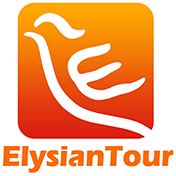Getting Around in China
China has established a well-improved transportation network of flights, trains, highways, country roads, subways and river channels that allow you to travel around the vast country. In particular, the world's most extensive high-speed rail system keeps expanding in China, which makes it possible to move between the major touristy cities within 6 hours by a ride of comfort. The increasing metro/subway lines of local transport enable the travelers to explore the destinations with much more flexibility on their own. A cruise on the water channels or rivers would even become an enjoyable experience of itself.
However, long-distance trip in China might not be easy always. Many remote but scenic areas in Yunnan, Guizhou, Tibet and Zhangjiajie could only be accessed by limited buses. If travel with children or seniors, you may confront with more stress from the hassle of transfers. The easiest and smartest way is to book a tour with an experienced travel agency. Hereunder are the most common traveling methods to get around the massive expanse of China.
China boasts an extensive air network for both international and domestic flights. Airplanes, no doubt, is the fastest and easiest means to get to China from USA and most European countries. There are an increasing number of daily nonstop flights bound for China via three major international gateways including Beijing, Shanghai and Hong Kong.
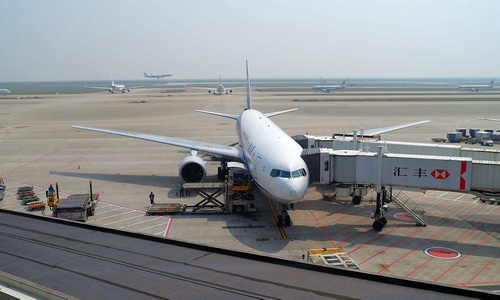
China's domestic air networks is also expanding rapidly, and travel by air is still the fastest way to transfer between major cities. Booking domestic flights beforehand is necessary when you travel in peak season or you are pressed for time. Though most routes are available for oversupply of flights, early birds could always get a good rate. All the airports in China is language friendly. You could navigate to the right place by plenty of English signs and broadcasting. Fast food restaurants like KFC and McDonald's could be found in every airport.
China boasts the world's largest and most extensive rail networks with a total length of over 103,000km, and trains are arguably the best and most popular ways to travel around China for both long and short distance. Particularly an expanding web of high-speed network has been building between major cities, which largely shrinks the travel time within 6 hours with an average speed at 350 km/h for G trains and 250 km/h for D trains.
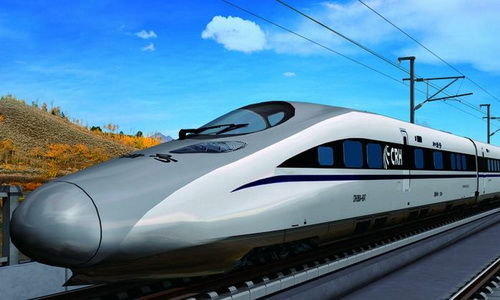
Safer, more comfortable and punctual than travelling by air, high-speed train also have the best facilities including western style toilets, crowds-free cabins, spacious legroom and adjustable seats rivaling over all other transport methods. Read more on Train Types, Seat Types, and Onboard Facilities.
Taking a train is easy for foreigners, too. All the train stations are well marked both in Chinese and English, and in highspeed railway stations, there are lifts and escalators to release you from the heavy luggage. Fast Food chain restaurants like KFC and McDonalds could be found everywhere.
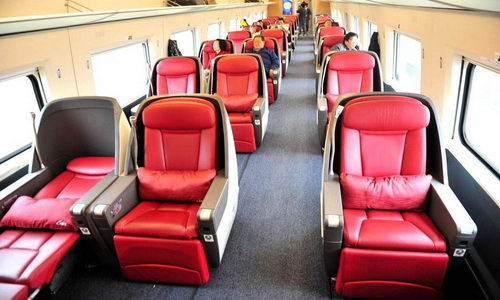
1. You must avoid traveling by rail during Chinese public holidays like National Holiday (Otc. 1 - 7) and the Spring Festival travel rush when the train stations are insanely crowded. Tickets would be released and sold out quickly.
2. It is wise to book train tickets in advance as they are always in great demand in China. The best way to obtain a rail ticket is booking with a tour operator as online booking would be really troublesome for foreigners.
3. Popular high-speed travel routes: Beijing - Shanghai, Beijing - Xian, Shanghai - Hangzhou, Shanghai - Huangshan, Beijing - Luoyang - Xian, Xian - Pingyao, Xian - Chengdu, Chengdu - Chongqing, Yichang - Shanghai
Every city in China is accessible by highway. Buses could lead you everywhere that planes and trains can reach, and far beyond, the coach service could cover nearly all small towns and villages in China. For the same distance, bus is always a slower but economical alternative to air or rail travel. Most coaches and buses are facilitated with air-conditioners, and some upscale ones have toilets on board. For longer trips, the buses are even available for sleeping berths, and the drivers will also make stops every few hours for passengers to use the restroom.
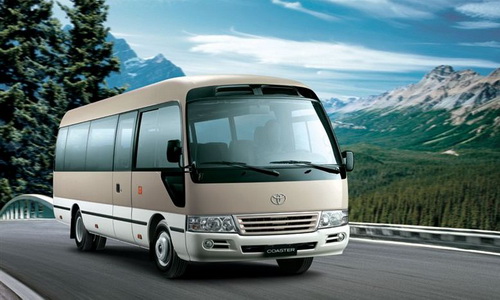
In addition, the frequent departures of buses make the tickets easier to acquire, without any need to book in advance. The hassle is that a city may have several bus stations scattered in different directions, so it is not an easy job to find the right departure point especially for foreign travelers. The road condition in some remote and mountainous areas like Guizhou, Sichuan, Tibet and Yunnan are less than ideal especially in bad weather, and travelers should lower their expectations for comfort for such bus rides.
Where there is a river in China, there is ferry service. The longest Yangtze River, Pearl River and the coastal areas in China east and south rely much on the regular water transportation. Ferry service is extensively used near Pearl River Delta, as Hong Kong operates various speedy ferries and turbojets to port cities like Shenzhen, Macau, Guangzhou, Foshan and Dongguan. Likewise in Shanghai, you could take ferries to Tianjin and Dalian as well as Qingdao. However, ferry is more than a transportation method by moving passenger around, but itself could be something worth an experience.
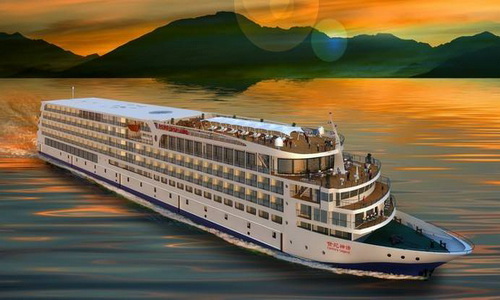
For example, the Yangtze River cruise between Chongqing and Yichang could be one of the most classic journeys in China. It is the best way for travelers to absorb the spectacular natural beauty of three Three Gorges. To discover the picturesque Li River, there is no better way than boarding a day cruise from Guilin down to Yangshuo. In water towns like Xitang, Tongli and Wuzhen, a gondola ride through the crisscrossing ancient canals is a must-do for every visitor.
Local transport systems in most China cities are diverse, cheap and convenient, but they are not really easy to manage by foreigners on their own except for cities with metro or subway systems.
Travel by metro, subway or light rail is always the fastest and most efficient way to get around a city. Cheap, punctual and free of traffic jam, subway is also the most doable method for foreign travelers by offering bilingual (Chinese - English) signage and broadcasting. However, you shall never try to take the metro at the rushing hours (7-8am, 6-7pm) in workdays, as it is so crazily crowded that you need some real Chinese Kungfu to push yourself in to the cabin. Subway-friendly travel cities include Beijing, Hong Kong, Shanghai, Guangzhou, Xian, Chongqing, Tianjin and Hangzhou.
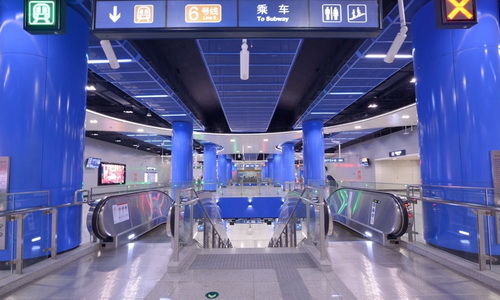
City buses are the cheapest way (usually ¥1 to ¥2) to get around the downtown, and they usually depart at high frequency. However, foreign travelers find hard to use them because of failing to find the right place to hop on and off the bus, and sometimes even take the wrong buses on account of the language barrier. Another drawback is that most buses are overburdened, which makes them the best place for pickpockets to take their chance.
Taxis:Taxis are easy to find and affordable in both large and small cities of China. You can stand by the road or street, and wave your hand overhead to hail a taxi. Generally, taxis charges by meters, and the flag-down price varies slightly in different cities (usually ¥8 to ¥15). However, the case might be different at airports or railway stations, as most drivers will offer a flat price that you could negotiate over before getting in the taxi. If you want the meter to be used, you shall also be on guard against the fake meters generated by detouring the road. The last piece of advice you shall keep in mind is to stay away from the unlicensed cars.
Note: If you have problems in communication with the driver, you’d better prepare a card beforehand with the Chinese name and address of your hotel and places to go, so that you can show it to the driver.
Bicycle:No country in the world can have more bicycles than China since the great idea of bike-sharing was undergone nationwide. You can find bike docking stations every 500 meters away in cities like in Beijing, Hangzhou, Xian and Shanghai.
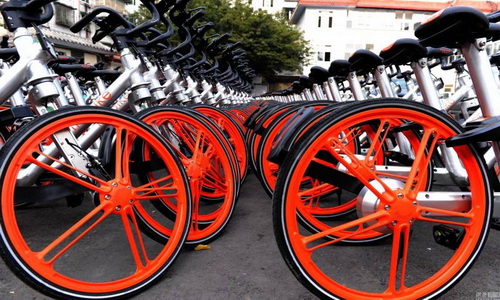
As a super cheap traveling method, most bikes could be hired by hour, and the rate for a day is approximately ¥10 to ¥15, which vary between different companies like Mobike and Ofo. In a city without bike-sharing system, you can rent one from the hostels or hotels. Yet bike is an authentic way at your own pace to explore the tourist sites such as the old hutongs in Bejing, West Lake in Hangzhou, cultural lanes at the foot of the Xian City Wall, and the idyllic countryside of Yangshuo.
Car rental is available in China, but self-drive is rather complicated and even impossible for short-term foreign visitors. You need to take some complex tests and offer plenty of paperwork like three-month residency permit to gain a local license. Cars with Chinese driver could be easily rented on the daily and route basis, but the fare could be over inflated as you need pay for the car itself and the driver. The following method might be the best choice for you if seeking flexible and personalized tour service.
If you travel China with a tour operator, all your hassles of transportation would be eliminated. Your private vehicle with experienced driver and guide will always pick you up timely from the airports, train stations or hotels, and make beamless transfers from spot to spot. You never need to worry about missing the car, or stand up with longtime waiting for others. Moreover, if travelling with Elysian Tour, you will be served with a clean, comfortable and air-conditioned vehicle. You could enjoy plenty of space for yourself and the luggage, and unlimited bottled water is provided onboard for free. During the ride, you could take nice naps or allow your insider guide to enrich your hours by doing some interpretations on the history and cultural as well as the custom about the city.
Transport in China is really diverse. In touristy places, you could probably achieve lifetime memories by try some unique ride experiences, such as biking on the Xian City Wall, taking rickshaw into old hutong alleys of Beijing, embarking on a bamboo raft at Yulong Rover, riding a camel in Dunhuang (a significant stop on ancient Silk Road) and taking horse-drawn carriage at Erhai Lake of Dali as well as cable cars up to the Great Wall and roaring mountains.

